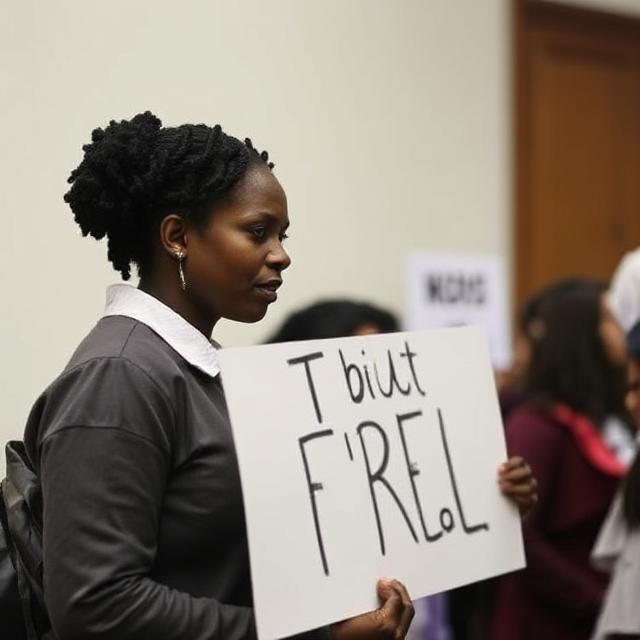The case of Tara Grinstead, a high school teacher and former beauty queen, captivated Georgia and the nation after her mysterious disappearance in 2005. Despite extensive searches and investigations, her case remained unsolved for over a decade, until new developments brought the tragedy back into the spotlight. Tara’s story highlights the complexities of unresolved cases and the impact on families and communities.

Early Life and Education
Tara Grinstead was born on February 14, 1974, in Hawkinsville, Georgia. Growing up in a supportive and loving family, she was instilled with values of hard work and perseverance. After graduating from Hawkinsville High School, Tara pursued higher education at Georgia Southwestern State University, where she earned a degree in education.
Career
Upon completing her degree, Tara became a dedicated teacher at Irwin County High School in Ocilla, Georgia. She was passionate about her work, inspiring her students with her enthusiasm for history and her commitment to their success. Tara was also involved in various extracurricular activities, including coaching the school’s cheerleading squad and participating in community events.
In addition to her teaching career, Tara was a former contestant in the Miss Georgia pageant, where she showcased her beauty and poise. Known for her striking looks and vibrant personality, she was well-liked by her peers and students alike.
The Disappearance

The Last Known Sighting
On the night of October 22, 2005, Tara attended a local festival in her hometown. After enjoying the festivities, she visited a friend’s house before returning home. Witnesses reported seeing her at the festival, and she was described as being in good spirits. However, when she failed to show up for work on Monday, October 24, her colleagues grew concerned.
The Search
Tara’s friends and family quickly mobilized to report her missing. Local law enforcement initiated a search, canvassing the area around her home and interviewing those who had seen her last. They discovered that her home showed no signs of forced entry, and her belongings, including her car, were still at her residence.
The police found Tara’s purse and keys inside her home, but her cell phone was missing. The investigation revealed that her last known contacts included friends and acquaintances, and authorities began to piece together a timeline of her final hours.
The Investigation

Community Involvement
As news of Tara’s disappearance spread, the local community rallied together to support her family. Volunteers organized search parties, distributing flyers and posters in hopes of finding any leads. The media coverage intensified, with local news outlets highlighting the case and keeping it in the public eye.
Theories and Leads
Investigators explored multiple theories regarding Tara’s disappearance. They looked into her personal life, examining her relationships and any potential conflicts. Friends described her as having a close-knit circle but noted that she had recently ended a relationship, which raised questions about her emotional state.
Over the years, numerous leads and tips poured in from the public, but none led to a breakthrough. The case grew cold, and Tara’s family and friends remained determined to keep her memory alive. They organized vigils and continued to advocate for her, hoping to generate new leads.
Breakthrough and Arrest
New Evidence

In 2017, a significant breakthrough occurred when a local man, Ryan Duke, was arrested in connection with Tara’s murder. Duke had been a former student of Tara’s and had a troubled past. His arrest came after a friend of his, Bo Dukes, claimed that Duke confessed to killing Tara. According to the friend, Duke had admitted to breaking into Tara’s home and, during a confrontation, accidentally killing her.
Arrest and Charges
In February 2020, Ryan Duke was charged with murder, and the case gained renewed media attention. The details of the alleged crime were chilling, as investigators revealed that Tara’s body had never been found, complicating the prosecution’s case. The lack of physical evidence presented challenges for both the prosecution and defense.
The Trial

Community Support
As the trial approached, the community rallied around Tara’s family, showing support and solidarity. Local organizations and community members organized events to raise awareness about the case and honor Tara’s memory. The emotional toll on her family was palpable, as they navigated the complexities of grief and the pursuit of justice.
Legal Proceedings
The trial began amid significant media coverage, drawing attention from across the state and beyond. The prosecution faced challenges in presenting their case without a body, relying heavily on witness testimony and circumstantial evidence. They focused on Duke’s alleged confession and the inconsistencies in his statements.
Defense attorneys argued that the evidence was insufficient to prove Duke’s guilt beyond a reasonable doubt. They highlighted the lack of direct evidence linking him to the crime and questioned the credibility of the witness who claimed Duke confessed.
Emotional Testimonies
Throughout the trial, Tara’s family shared heartfelt testimonies about her life, emphasizing her impact on the lives of her students and the love she brought to those around her. They recounted memories of her kindness, dedication to teaching, and the joy she brought to her friends and family. The emotional weight of their testimonies resonated with the jury and the community.
Legacy

Ongoing Impact
Tara Grinstead’s case remains a poignant reminder of the impact of unresolved crimes on families and communities. The ongoing trial has reignited interest in her story, and her family continues to seek justice, hoping to find closure for the tragic loss of a beloved teacher and friend.
The case has inspired discussions about safety, community vigilance, and the importance of supporting families affected by violent crime. Tara’s story serves as a testament to the enduring search for truth and justice, and many hope that one day, Tara will be laid to rest, and her family will find peace.
Continued Advocacy
In the years since Tara’s disappearance, her family has become advocates for missing persons and victims of violence. They have participated in awareness campaigns and supported legislation aimed at improving resources for families dealing with similar tragedies. Their commitment to keeping Tara’s memory alive has inspired many, ensuring that her story will not be forgotten.
Conclusion

The tragic case of Tara Grinstead continues to resonate with those who knew her and those who have followed her story. As the legal proceedings unfold, the hope for justice remains strong. Tara’s legacy lives on through the love and memories shared by her family, friends, and community, who continue to fight for answers and advocate for those who cannot speak for themselves.


